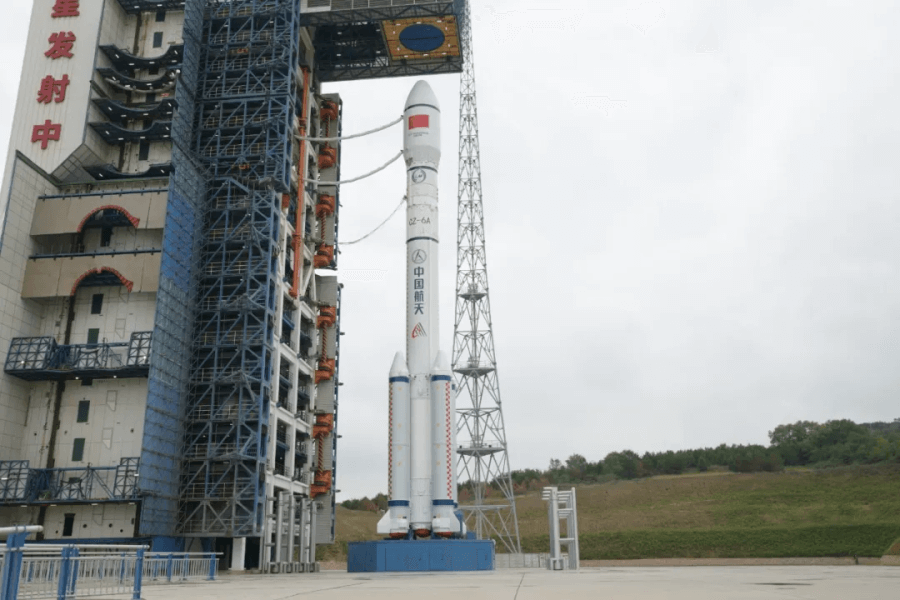A Chinese rocket carrying the first satellites in a planned communications constellation intended to rival Starlink broke up in low-Earth orbit this week, spreading debris across the orbital regime and worrying experts.
The Long March 6A rocket launched Aug. 6 had successfully deployed 18 satellites for the Qianfan, or “Thousand Sails,” communications constellation when it broke up in space. The China Aerospace Science and Technology Corporation said the launch was a complete success, but observers noted that the rocket’s second stage appeared to break apart.
SPACECOM and U.S. Space Forces-Space both confirmed the reports, with SPACECOM saying it was tracking 300 pieces of debris. LeoLabs, a collision avoidance and space tracking company, said on social media that the breakup resulted in “at least 700 debris fragments and potentially more than 900.”
SPACECOM reported “no immediate threats” from the debris. But the altitude of the rocket when it broke up—between 700 and 800 kilometers above the Earth—is a cause for concern, retired Air Force Col. Jack Anthony told Air & Space Forces Magazine.
“Whatever they create, debris-wise, is going to stick around for a very, very long time as it slowly, ever so slowly, descends towards the atmosphere,” Anthony said. “We’re talking tens of decades of this stuff. … As it comes down, it’s charging through other orbital regimes where there are productive satellites operating, or other pieces of debris, perhaps a big rocket stage. And if they [collide] at these velocities—what we call hyper velocity—it will create a lot more debris.”
Particularly troubling is that the rocket was ferrying satellites into a polar orbit, said retired Maj. Gen. Thomas D. Taverney, former vice commander of Air Force Space Command. “We don’t have a lot of debris in polar orbits,” Taverney said. “Most of the debris we’ve had are in nonpolar orbits. Polar orbits are an important orbit, and these debris pieces are going into polar orbit,” dirtying a formerly clean regime.
The Long March 6A is a new system, and experts say problems are to be expected with any new rocket. But after seven launches, a pattern is now emerging: The upper stage of the 6A has released debris in four of those launches, with the number of pieces ranging from 50 or so hundreds.
“It appears that on every one of those launches, that rocket has had … multiple pieces of debris created out there,” Taverney said. “And that’s got to be a concern not just to us, but to China too, I would think.”
China reportedly has more launches planned using Long March 6A and the Qianfan constellation is designed to eventually comprise14,000 satellites.
“They’re going to launch a huge constellation, right? Lots and lots of launches. They start throwing 50 pieces of debris up every launch, it’s going to be a concern,” Taverney said.
Worries about space debris continue to grow as the number and scale of satellite constellations increase, particularly in low-Earth orbit. The more satellites and debris, the greater the likelihood of collisions, which Anthony said risk a chain reaction that could produce debris on a scale never seen before.
The Space Force, NASA, and commercial companies are studying the idea of debris removal, and the U.S. has pledged to follow “tenets of responsible behavior” in space, including limiting the amount of debris it generates in the first place. But it’s not clear if China will follow suit.
Taverney said it’s more likely China will simply stick with the 6A through its early struggles.
“The Chinese are much more risk tolerant,” he said. “They’re willing to go and take risks because they’re a different kind of society. Crashing and burning is not as big a deal to them. It is a big deal to them—don’t get me wrong. But they go earlier in the risk profile than, say, a U.S. company.”
Even so, the challenges China has experienced so far must be worrying to them, Taverney said. “Even with China’s risk tolerance, I can’t believe that they’re not concerned.”

